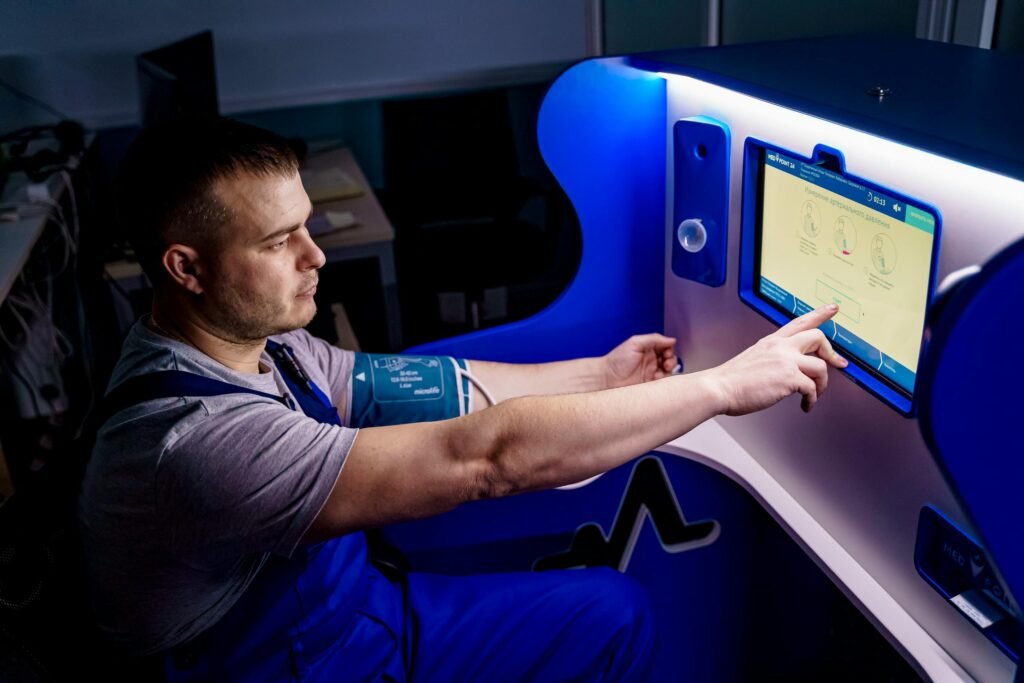Discover the critical connection between vitamin D and testosterone levels — and how fixing your deficiency could naturally boost your hormones and transform your health.

The Hidden Connection Between Vitamin D and Testosterone
As a fitness coach, I’ve seen countless men struggle with unexplained fatigue, decreased muscle mass, and diminished libido. What many don’t realize is that their symptoms might stem from a simple yet overlooked deficiency: vitamin D.
Recent research has revealed a powerful connection between vitamin D levels and testosterone production. Men with adequate vitamin D levels consistently show higher testosterone compared to those who are deficient. This isn’t just correlation — there’s a direct biological mechanism at work.
The “sunshine vitamin” does far more than support bone health. It acts as a hormone precursor, influencing the very glands responsible for testosterone production. When you’re vitamin D deficient, you’re essentially handicapping your body’s natural ability to produce optimal testosterone levels.

The Science: How Vitamin D Affects Testosterone Production
Understanding the biological mechanism helps explain why this connection is so crucial. Vitamin D receptors are found throughout the male reproductive system, including the testes, prostate, and sperm cells. When vitamin D binds to these receptors, it triggers a cascade of events that directly influence hormone production.
Here’s what happens at the cellular level:
- Leydig Cell Activation: Vitamin D stimulates Leydig cells in the testes, which are responsible for testosterone production
- Enzyme Regulation: It helps regulate key enzymes involved in testosterone synthesis
- Cholesterol Conversion: Vitamin D assists in converting cholesterol into testosterone precursors
- Hormonal Signaling: It improves communication between the brain and testes through the hypothalamic-pituitary-gonadal axis
A landmark study published in the European Journal of Endocrinology followed 2,299 men for one year. Those who maintained adequate vitamin D levels (above 30 ng/mL) showed significantly higher total testosterone, free testosterone, and bioactive testosterone compared to deficient men.
Signs You Might Be Vitamin D Deficient
Vitamin D deficiency is often called the “silent epidemic” because symptoms can be subtle and easily attributed to other causes. However, when combined with low testosterone, the effects become more pronounced.
Physical Symptoms
- Chronic fatigue and low energy levels
- Muscle weakness and decreased strength
- Bone and joint pain
- Frequent infections or slow healing
- Hair loss or thinning
- Weight gain, particularly around the midsection
Hormonal and Mental Symptoms
- Decreased libido and sexual performance
- Depression or mood swings
- Brain fog and difficulty concentrating
- Irritability and anxiety
- Sleep disturbances
- Loss of motivation and competitive drive
If you’re experiencing several of these symptoms, especially if you spend most of your time indoors or live in a northern climate, vitamin D deficiency could be a contributing factor to your low testosterone.
Who’s Most at Risk for Vitamin D Deficiency?
While anyone can develop vitamin D deficiency, certain groups of men are at higher risk:
| High-Risk Group | Risk Factors |
|---|---|
| Office Workers | Limited sun exposure, indoor lifestyle |
| Men Over 50 | Decreased skin synthesis, reduced absorption |
| Dark-Skinned Men | Higher melanin reduces vitamin D synthesis |
| Northern Climates | Limited UVB rays, especially winter months |
| Obese Men | Fat-soluble vitamin D gets trapped in adipose tissue |
Testing Your Vitamin D Levels
The only way to know your vitamin D status definitively is through blood testing. The test you want is called 25-hydroxyvitamin D, or 25(OH)D. This measures your body’s storage form of vitamin D and provides the most accurate picture of your status.
Understanding Your Results
- Deficient: Less than 20 ng/mL (50 nmol/L)
- Insufficient: 21-29 ng/mL (52.5-72.5 nmol/L)
- Sufficient: 30-50 ng/mL (75-125 nmol/L)
- Optimal (for testosterone): 40-60 ng/mL (100-150 nmol/L)
For testosterone optimization, research suggests that levels between 40-60 ng/mL may be ideal. Many functional medicine practitioners now recommend maintaining levels in this range for optimal hormonal health.
Testing Options: You can get tested through your doctor, or use at-home testing kits for convenience and privacy.
At-home vitamin D test kit (US Readers)
At-home vitamin D test kit (GB Readers)
At-home vitamin D test kit (EU Readers)
How to Fix Vitamin D Deficiency
Correcting vitamin D deficiency requires a multi-pronged approach. While supplements are often necessary, combining them with natural sources provides the best results.
Sun Exposure Strategy
- Aim for 15-30 minutes of midday sun exposure (10 AM – 3 PM)
- Expose large skin areas (arms, legs, torso) when possible
- Start gradually to avoid sunburn
- Fair skin needs less time, darker skin needs more
- UVB rays are strongest at higher altitudes and closer to the equator
Dietary Sources
While few foods naturally contain significant vitamin D, some options can contribute:
- Fatty fish (salmon, mackerel, sardines, tuna)
- Cod liver oil
- Egg yolks from pasture-raised chickens
- Fortified dairy products and cereals
- Mushrooms exposed to UV light
Supplementation Guidelines
For most men with deficiency, supplementation is necessary to achieve optimal levels quickly:
- Maintenance dose: 2,000-4,000 IU daily for sufficient levels
- Correction dose: 5,000-10,000 IU daily for deficient individuals
- Form: Vitamin D3 (cholecalciferol) is more effective than D2
- Timing: Take with fat-containing meals for better absorption
- Cofactors: Consider magnesium and vitamin K2 for optimal utilization
The Testosterone Boost: What to Expect
When you correct vitamin D deficiency, improvements in testosterone levels don’t happen overnight. Here’s a realistic timeline based on clinical experience:
Week 1-2: Initial Changes
- Improved sleep quality
- Slight increase in energy levels
- Better mood stability
Week 4-8: Noticeable Improvements
- Increased motivation and drive
- Enhanced workout performance
- Improved libido
- Better muscle recovery
Month 3-6: Optimal Benefits
- Peak testosterone improvements (typically 20-30% increase)
- Enhanced muscle mass and strength
- Improved body composition
- Maximum hormonal benefits
Research shows that men with severe deficiency can see testosterone increases of 20-30% when vitamin D levels are optimized. While this might not bring levels into the high-normal range for everyone, it often represents the difference between feeling sluggish and feeling vital.
Maximizing the Testosterone-Boosting Effect
While correcting vitamin D deficiency is crucial, combining it with other natural testosterone-supporting strategies amplifies the benefits:
- Strength Training: Compound lifts like squats and deadlifts naturally boost testosterone
- Quality Sleep: 7-9 hours nightly supports optimal hormone production
- Stress Management: Chronic stress elevates cortisol, which suppresses testosterone
- Healthy Fats: Cholesterol is the building block of testosterone
- Zinc Optimization: This mineral is crucial for testosterone synthesis
- Maintain Healthy Weight: Excess body fat converts testosterone to estrogen
High-potency vitamin D3 supplement with K2 (US Readers)
High-potency vitamin D3 supplement with K2 (GB Readers)
High-potency vitamin D3 supplement with K2 (EU Readers)
Common Mistakes to Avoid
- Taking too little: 1,000 IU rarely corrects deficiency in adults
- Inconsistent dosing: Daily supplementation is more effective than weekly megadoses
- Ignoring cofactors: Magnesium and K2 are essential for vitamin D function
- Not retesting: Monitor levels every 3-6 months to ensure optimal dosing
- Stopping too soon: It takes 3-6 months to see maximum testosterone benefits
- Taking with wrong foods: Vitamin D needs dietary fat for absorption
Safety Considerations and Monitoring
While vitamin D is generally safe, taking extremely high doses long-term can cause toxicity. Here’s what you need to know:
- Safe upper limit: Most experts consider up to 4,000 IU daily safe long-term
- Toxicity threshold: Blood levels above 100 ng/mL may indicate toxicity
- Symptoms of excess: Nausea, kidney stones, excessive calcium absorption
- Drug interactions: Can increase absorption of certain medications
- Medical conditions: Some conditions may require modified dosing
Always work with a healthcare provider when correcting severe deficiency or if you have underlying health conditions. Regular monitoring ensures you achieve optimal levels safely.
The Bottom Line on Vitamin D and Testosterone
The connection between vitamin D and testosterone is one of the most significant yet underappreciated factors in men’s hormonal health. As I’ve witnessed in decades of coaching, men who optimize their vitamin D levels often experience dramatic improvements in energy, strength, libido, and overall vitality.
This isn’t about chasing marginally higher numbers on a blood test — it’s about unlocking your body’s natural potential for optimal hormone production. When vitamin D deficiency is silently sabotaging your testosterone, no amount of exercise, diet optimization, or other interventions will achieve their full potential.
The beauty of this approach is its simplicity and safety. Unlike synthetic hormones or aggressive interventions, optimizing vitamin D works with your body’s natural systems. It’s foundational health that supports not just testosterone, but overall wellbeing, bone health, immune function, and cardiovascular health.
Start with testing, implement a comprehensive correction strategy, and give your body 3-6 months to respond. The investment in your hormonal health will pay dividends in every aspect of your life.



